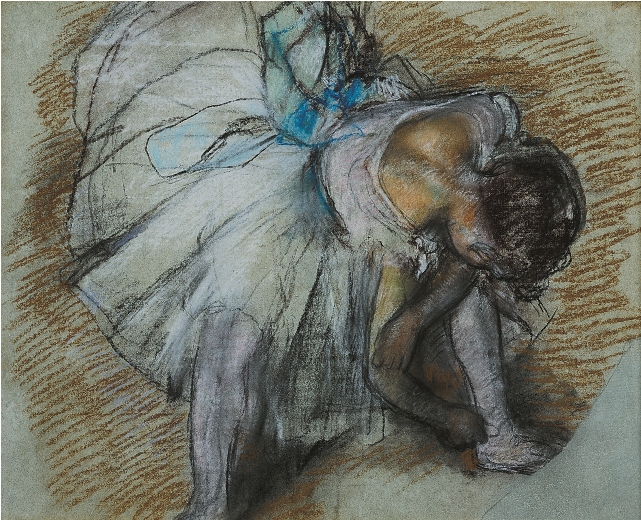Read part one in my series on Degas and pastels.

Hilaire-Germain-Edgar Degas Dancer Adjusting Her Shoe, 1885. Pastel on paper, 19 x 24 in. Collection of The Dixon Gallery and Gardens, Memphis, Tennessee; Bequest of Mr. and Mrs. Hugo N. Dixon, 1975.6.
Degas’s use of fixative was the key to the appearance of his many-layered pastel works. Fixative makes it possible for pastel to adhere to paper without smearing or smudging and enables the artist to continue to work over pastel that has already been applied. Degas searched for a fixative that would not alter the matte, velvety quality of his pastels. Degas used a secret formula for fixative given to him by artist Luigi Chialiva that has not been duplicated today. By using fixative to prevent blending and smudging, Degas created a roughened surface to which each layer of pastel adhered easily. The fixative applied at different layers of the composition enabled Degas to create a work using multiple layers of pastel, which achieved an astonishing complexity of superimposed color. Continue reading

